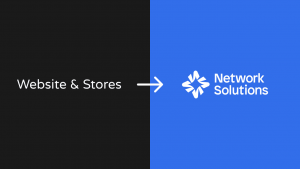Key takeaways:
- Most shoppers compare prices and features before purchasing but still choose brands they trust. This shows that reliability matters more than price.
- Product quality builds trust for every generation, but what deepens it differs: older shoppers favor transparent, professional brands, while younger ones pay close attention to brand values.
- Trust, transparency, and shared values matter so much that consumers will overlook minor site issues or pay more for trusted brands. To earn that trust, SMBs should invest in strategic marketing, strong website security, and perks like free shipping.
You have about six seconds to capture a website visitor’s attention—but is simply keeping them there enough to convert the sale?
We surveyed 1,000 Americans to learn more about online consumer behavior. We’ll break down how site performance, hidden fees, popups, brand trust, and loyalty all play a role in consumer behaviors.
Here’s what we found.
The 6-second rule: How fast is fast enough?
The rule of thumb says websites should load in under three seconds. But our recent survey shows that 35% of Americans are willing to wait six to 10 seconds for a website to load before leaving.
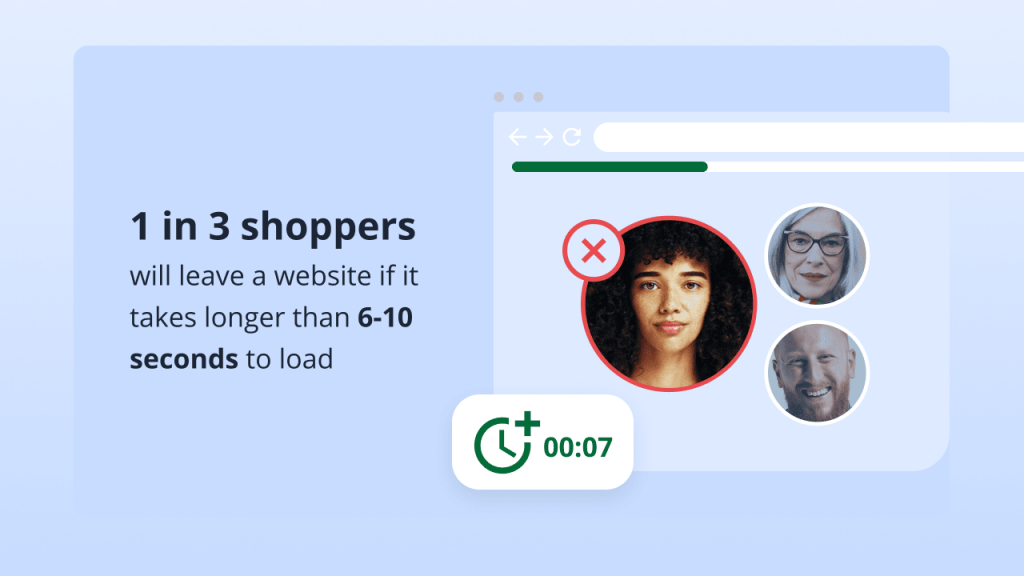
While these findings show shoppers are more patient than we think, every second still counts. A faster website is usually better because it allows you to capture the remaining portion of your audience who might be a little more impatient.
Hidden fees, pop-ups, and visual turn-offs
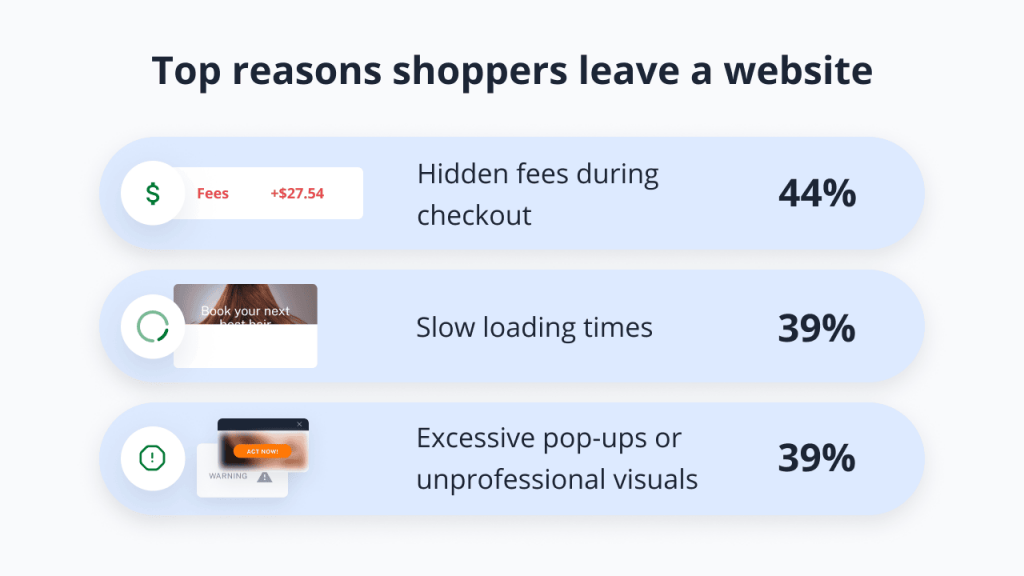
While there are many reasons that could influence people to leave a website, the top three reasons we found were:
- Hidden fees during checkout (44%)
- Slow loading times (39%)
- Excessive pop-ups or unprofessional visuals (39%)
Hidden fees during checkout
Just over 40% of Americans (44%) said they would leave a website immediately if they encountered hidden fees at checkout. Baby boomers or older (62%) and Gen X (48%) were more likely than millennials (34%) and Gen Z (25%) to abandon their carts due to these fees.
Interestingly, shoppers who abandon checkout because of hidden fees are not necessarily price sensitive. In fact, 52% said they’re willing to spend extra for quality, and 1 in 4 stay loyal to brands because of positive past experiences.
Slow loading times
While we found that 27% of online shoppers are willing to wait six to 10 seconds for a page to load, another 19% said they’re only willing to wait three to five seconds.
This is particularly true of younger shoppers, with 22% of Gen Z and 21% of millennials saying they would not wait longer than five seconds, compared to only 14% of baby boomers.
Excessive pop-ups or unprofessional visuals
Excessive pop-ups and unprofessional visuals are among the top three reasons people leave a website, but the impact isn’t the same across generations. We found that 42% of Gen X and 49% of baby boomers or older say they would likely leave a site because of these issues, compared to only 26% of Gen Z and 35% of millennials.
How customers respond to issues
Website issues are inevitable. The question is, how do shoppers respond when they happen? Our data showed:
- 30% said they would leave the site for a competitor.
- 27% said they would try refreshing or troubleshooting the issue themselves.
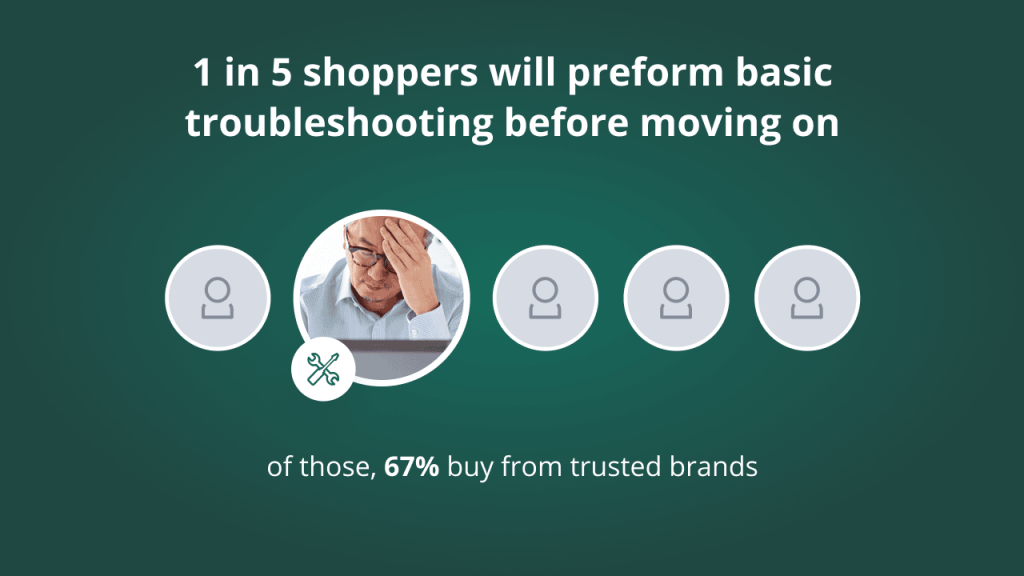
Boomers (38%) are more likely to leave, while Gen Z (32%) is the most likely to attempt a fix. Millennials (28%) and Gen X (28%) fall in between, with baby boomers (22%) least likely to troubleshoot.
Among those who try to fix the issue, 67% said they prefer to buy from brands they trust. This suggests that trust can influence whether a visitor chooses to stay or leave when encountering a problem.
Closing the deal: Free Shipping, fast checkout, secure payments
While many factors influence a visitor’s decision to make a purchase, we found that free shipping, website security, and ease of checking out are the top three drivers of a sale.
- 60% mention free shipping as their reason for checking out.
- 51% prefer a fast and simple checkout process.
- 49% value secure payment methods.

Free shipping
Free shipping is a major purchase driver for older generations, with 78% of baby boomers and 63% of Gen X saying it influences their decision to buy. The impact is smaller for younger shoppers. Our data revealed that 49% of millennials and 45% of Gen Z say free shipping motivates them.
Website security
Nearly half of shoppers (49%) say that a secure payment method convinces them to complete an online purchase. But it’s not just the payment method. Our research shows that website security matters to 8 in 10 shoppers (84%).
But rather than focusing on the technical aspects of website security, these shoppers look to a brand’s reputation and values as their basis for trust, with nearly 70% of online shoppers saying these are important considerations before purchasing.
Once that trust has been earned, it carries over into purchasing behavior: about 67% of these security-aligned shoppers say they’re more likely to buy from brands they trust, even if those brands are more expensive.
This shows that while consumers value website security, what truly shapes their confidence is a perceived sense of trust in the brand.

Economic reality check: Quality, loyalty, and social responsibility
Trust is a defining factor in today’s shopping trends. More than half of Americans (64%) said they’re more likely to stay loyal to a trusted brand than they were a year ago.
But what earns that trust?
The answer is tied to today’s economy. Many Americans are cutting back, even on things they want or need. Clothing (29%), groceries (29%), and electronics (24%) are among the top categories people say they’ve recently reduced spending on.
This doesn’t mean people have stopped spending altogether. It means they’re being more selective. Shoppers weigh not just price but also durability, reputation, and values when deciding where to buy.
For many, this comes down to lasting value. We found that 44% of respondents said they would pay more for a durable product than settle for a cheaper, less reliable alternative. This shows that consumers aren’t chasing the lowest price. They’re investing in products that last.
Values also play a role in loyalty. About 1 in 3 shoppers (31%) said they would stop buying from stores that end their diversity, equity, and inclusion (DEI) programs, with younger generations most affected.
By generation, here’s how many shoppers say they would stop supporting a brand if it ended its DEI program:
- 42% of Gen Z
- 41% of millennials
- 26% of Gen X
- 20% of baby boomers
And when it comes to ethical practices overall, Gen Z (6.8%) and millennials (7.3%) are almost twice as likely as baby boomers (3.9%) to say these values affect their buying decisions.
With younger generations being active in sharing their experiences online, SMBs should see this as an opportunity to strengthen trust by taking meaningful stances and fostering a sense of belonging.
Price vs. trust: What wins?
Most Americans are thoughtful, price-conscious shoppers. Our data revealed that 77% of people compare prices and features before making a purchase.
When it comes to balancing needs versus wants, 77% of shoppers said their purchases are more likely driven by need.
This shows that consumers are intentional when it comes to spending.
While price is still a decision-making factor, it’s not everything.
Among the 77% who said they compare prices and features:
- 68.7% said they still choose trusted brands, even if those brands cost more.
- 65.4% said they usually wait for products to go on sale before buying.
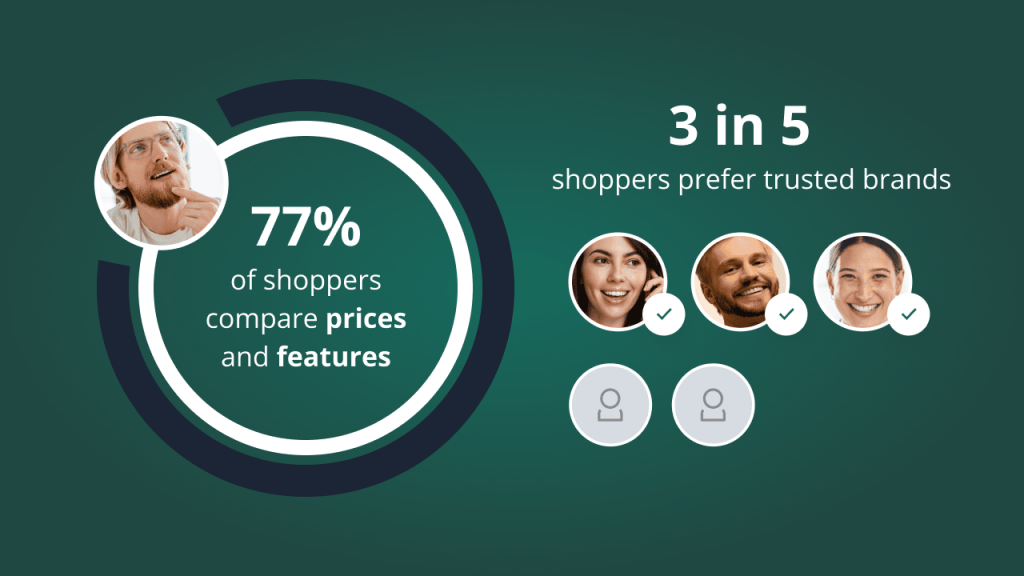
Looking at the broader group of respondents:
- 57% said they usually wait until an item goes on sale.
- 62% said they’re more likely to buy from brands they trust, even at a higher price.
- 66% said a brand’s reputation and values factor into their decisions.
These findings suggest that while price matters, trust and brand values matter just as much.
Build trust and win customers
Trust shows up again and again in how people decide where to shop and what to buy. For small businesses, this isn’t just a nice-to-have, it’s an advantage you can lean on.
By focusing on how you show up, you can turn first-time buyers into loyal customers.
Here are a few simple ways to put that into practice:
- Create a smooth customer experience with a fast, reliable website that makes every visit feel seamless and professional.
- Keep pricing clear and add perks like free shipping or loyalty rewards to show appreciation.
- Tailor your message to your audience. Older buyers often look for quality and comfort, while younger ones value sustainability and ethics.
- Share why you started, what drives your mission, and how your products connect to those values. A strong mission statement makes your brand relatable and helps it stick with people.
- Build a community. Today’s shoppers, especially younger ones, want to feel part of something bigger. Invite them into your mission, open the door to conversation, and create a space where they belong.
- Highlight reviews, testimonials, and real customer stories on your site.
Figuring this all out is a lot, and here at Network Solutions, we know how much SMBs have to juggle. But we’re here to be your partner in growth and support you every step of the way. From an AI-powered drag-and-drop website builder and secure domains to professional website design and marketing support, we’re here to help your business earn trust and grow with confidence.
Methodology
Network Solutions partnered with TEAM LEWIS to survey 1,000 individuals in the U.S. All respondents were 18 or older, and the sample was Census-balanced by age and gender. The survey respondents were independently sourced from Veridata Insights in the Summer of 2025.
Note: We encourage you to reference this study in your content and ask that you include a link back to this article for full access to the survey results.
Frequently asked questions
According to our research, older generations of consumers place trust in transparency, professionalism, and smooth user experience. Nearly half of Gen Xers said they would leave a site over hidden fees at checkout, along with 62% of baby boomers.
Younger shoppers are less concerned by these issues, but their trust is shaped more by values. Our research shows that 42% of Gen Z and 41% of millennials say they would stop supporting a brand that ended its DEI programs.
Small business owners should invest in brand reputation and strategic marketing efforts to build consumer trust. While website security is important, consumers can’t see this in action and instead value a perceived sense of trust in the brand. They look for signs of a brand’s intentionality, like a professional-looking site with fewer pop-ups, recommendations from others, and transparency with both pricing and values.


